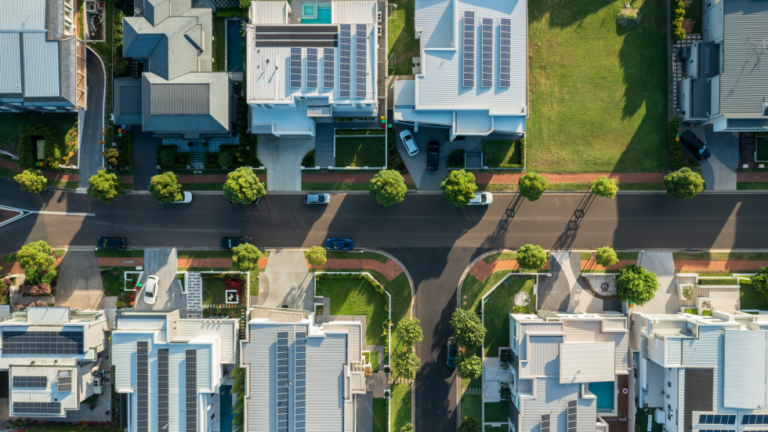An “Australian first” demonstration of aggregated residential flexible demand will be rolled out in South Australia, with the state’s main electricity distributor delivering smart energy upgrades to 500 households as part of a pilot program to coordinate power consumption and network the grid to support.
Electricity supplier South Australia Power Networks (SAPN) said the Energy Masters project will pioneer the coordination of residential resources such as solar energy on the roof and smart appliances to better match energy consumption with supply and respond to market signals, shifting household energy consumption away from periods of peak demand.
In the AUD 13.8 million ($9.12 million) Energy Masters project, SAPN will install consumer energy sources (CER) and smart energy devices such as solar panels, batteries, electric vehicle (EV) chargers and heat pump hot water systems in 500 homes, with energy usage optimized by home energy management systems.
SAPN Chief Executive Officer Andrew Bills said that enabling flexible demand at scale through the electrification and development of energy-smart households is expected to play an important role in managing peak demand, avoiding network expansion costs and reducing the costs for all consumers.
“We recognize that the energy system is complex, so the pilot will seek to identify how we can overcome this for the benefit of customers in a way that will also improve the way we manage our network,” he said.
Bills states that much of the technology needed to monitor usage and improve the responsiveness of home electrical appliances is already available “but we need to identify how we bring together government incentives, retail offers, energy-smart appliances and energy management systems in a way that is understandable and attractive for energy customers.”
Customers participating in the Energy Masters project receive subsidies for installing devices such as solar panels, batteries, EV chargers, hot water systems with heat pumps and split-system air conditioning units that can respond to network and market signals. Households will also be provided with a smart home energy management system to optimize their energy consumption at home.
In return, households will participate in a research program led by the Reliable Affordable Clean Energy for 2030 Cooperative Research Center (RACE for 2030), which will help demonstrate the value of energy-smart households and provide information on the interoperability of devices to improve energy efficiency. to inform the development of energy-smart households. national standards.
Darren Miller, CEO of the Australian Renewable Energy Agency (ARENA), which has committed A$6.2 million to the project, said Energy Masters will demonstrate the value flexible demand can bring to households, in a market saturated with renewables. energy.
“South Australia leads the world in variable renewable energy penetration, so it is a perfect setting to test how flexible energy use can complement a large share of renewable energy,” he said. “We are working with SA Power Networks and the South Australian Government to test CER coordination in a real world setting… and look forward to seeing the results of this trial and how its findings can be replicated across Australia.”
Expressions of interest to participate in the Energy Masters project will open in the second half of 2024 and the project will run until 2027.
ARENA said the South Australian trial builds on its existing portfolio of residential energy projects, including Project Edge in Melbourne and Western Australia. Project Symphony.
The launch of the Energy Masters project comes as a new report released by renewable energy advocacy group Solar Citizens suggests rooftop solar could be Australia’s “secret weapon” in the transition to a clean energy system.
The Accelerating consumer energy in Australia reportcommissioned by Solar Citizens and prepared by consultancy Nexa Advisory, found that rooftop solar has the potential to reduce grid infrastructure costs, lower energy prices and support electric vehicle adoption.
Nexa Advisory Chief Executive and report author Stephanie Bashir said Australia’s clean energy transition has stalled as development of large-scale solar, wind and battery energy storage projects slows.
“We are struggling to build new major renewable energy generation and batteries and the new transmission to connect that clean generation to customers,” she said. “The solution is to give power to the people. Consumer energy sources are Australia’s secret weapon in the transition.”
However, the report identified barriers to making the most of residential solar energy and increasing its adoption, including inconsistent regulations across states, unnecessary restrictions, a lack of transparency from energy suppliers and slow reforms.
The report’s recommendations include establishing national consistency in rooftop solar connection processes, establishing new minimum supply requirements, improving public access to data from the large-scale energy network providers and reforming the electricity rates.
Joel Pringle, acting CEO of Solar Citizens, said now is the time for the government to take action and lead efforts to update system specifications and regulations so that CER can be effectively integrated into the electricity grid.
“The electricity grid transition is underway, but the regulatory frameworks are playing catch-up rather than leading the way,” he said.
This content is copyrighted and may not be reused. If you would like to collaborate with us and reuse some of our content, please contact: editors@pv-magazine.com.


